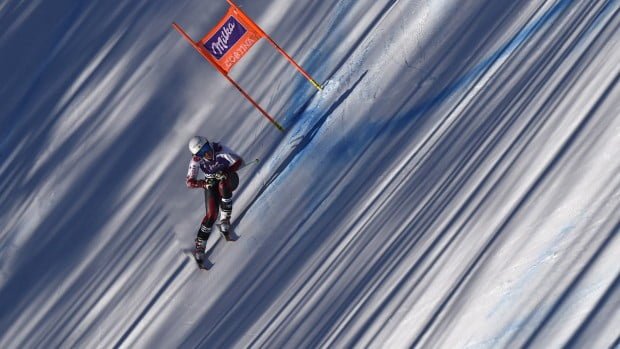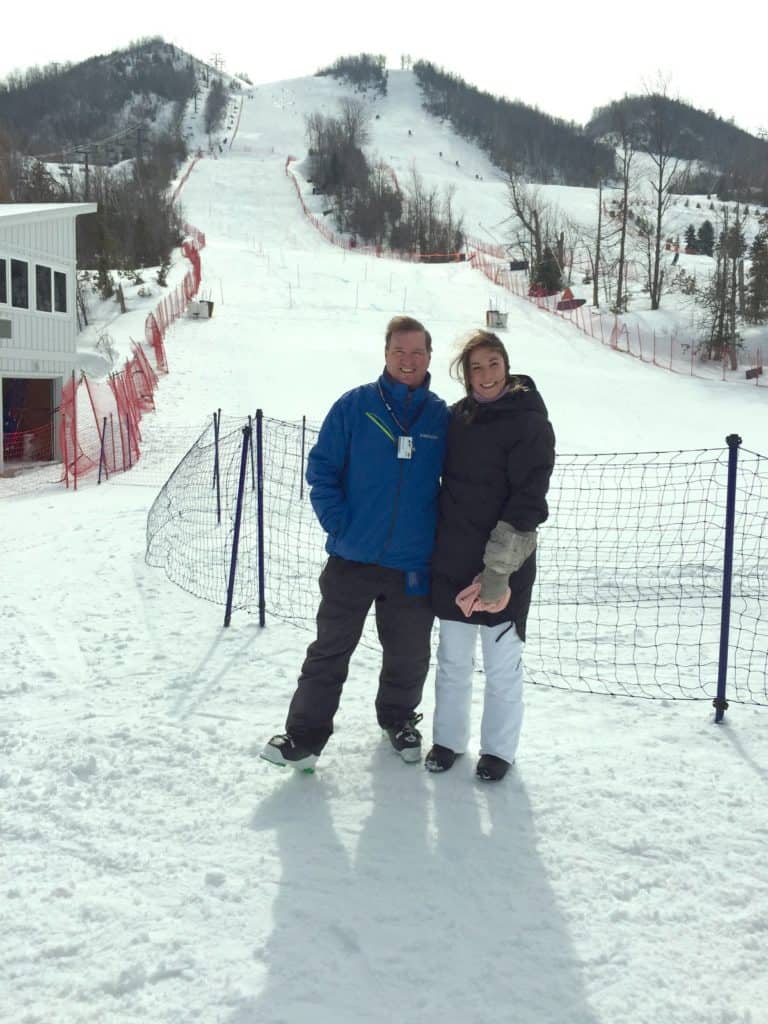Here’s a keynote that will leave your audience members shaking in their boots at the same time they are ready to jump out of the gate and achieve great things!
Two powerful, inspirational keynotes back to back — my message around “The Future Belongs to Those Who Are Fast,” and that of Larisa Yurkiw, global ski racer, Olympian and World Cup Racer, on a “Daring Need for Speed”
Every industry, business and profession now realizes that acting fast is one of the key metrics for success in the future. These two keynotes — at the start and conclusion of your event – provide the perfect bookends to what will be amazingly energized event!
To that end, you’ll want to understand Larisa’s story! Then, contact me for details on how to book us!
As an optimistic futurist, I’m always looking for the upside — I believe that the only way to move forward is to have an upbeat attitude on what you can do to shape the future in a positive way, rather than the easy way out of denigrating the potential of what comes next. It goes to one of my main points on stage: “Some people see a trend and see a threat. Real innovators see the same trend — and see an opportunity!”

Which brings me to skiing!
At the age of age of 39, some years ago, I somehow thought it could be an important cornerstone in my life and that of my family — that of becoming active, healthy and involved. If I was to live through my 40’s and beyond in good health — well, we should embrace winter!
So we took up skiing and my family became a family of skiers and snowboarders. I am so proud! (I could barely get down the baby hill the first few days – but in five short years, found myself skiing the Swiss Alps after I was the closing keynote speaker for the Swiss Innovation Forum.)
Little did I know that just about the same time, at my home ski club — a little bump of a hill in eastern North America known as Georgian Peaks — a young girl who was about 12 years old, was setting her own goals, determined to reach the podiums in her own life.
And did she ever succeed. Earlier this year, Larisa Yurkiw finished her career as one of the top-3 downhill racers in the world, racing with and sharing the podium with the likes of Lindsay Vonn, Julie Mancuso and others, on some of the most challenging courses in Switzerland, Italy and Austria, not to mention the Sochi Olympics. She challenged herself, dreamed big dreams, and established big goals — starting out a small little ski hill in Southern Ontario. During her racing career, she would hit speed of up to 140 miles per hour — and have to turn and balance on an instant.

Yet here’s the thing: Larisa’s story is not only personally motivating, but it also offers everyone fabulous unique business insight, and what happens when one if totally focused on a goal. For her, the racing career was a gruelling but ultimately rewarding trek. One that involved stunning disappointments, injuries and crashes that would condemn most mere mortals to a life of stagnation — not to mention a national ski association that turned its back on her at a critical time.
With that, she persevered, and won on her own terms. Consider these simple facts, which Larisa now uses on stage in her own keynote presentations:
- the average downhill racer hits forces of 3-5 G’s in a turn. Bode Miller has been clocked at 12 G’s in a turn!! That’s more than the 3.5 G’s that astronauts experience in a rocket launch.
- during her racing career, Larisa had 5 knee surgeries and 5000 hours of rehab — and yet still made it to the Sochi Olympics, and ranked in the top 3 in the world in subsequent World Cup racing season events
- she raised $750,000 over the last 3 years in her ‘free time’ in order to ski for Canada – because the Canadian ski team felt like distributing the financial support elsewhere, and chose not to support her after a crash just before the 2010 Whistler Olympics. No funding? No problem. She set out to build her own racing team, and raised the funds through crowdfunding and constant, relentless and innovative approaches to potential sponsors
The rest of us would do very well to learn from her example, because it it a story of stunning courage, determination, focus, and passion!
In my own case, I’m honoured to have witnessed this singularly spectacular journey from the sidelines, and am in awe of the opportunity to call her a friend. These days, I’m providing her guidance as she takes on the new and challenging role of sharing her motivational story on stage. Learn more at her Web site, www.larisaspeaks.com
Which brings me to the movie Streiff: One Hell of a Ride.
If you want to discover a great movie, watch this one. It documents the gruelling training, preparation and mastery of the mind that is downhill skiing. If you crave for a movie with depth, this is the one that you want to watch. Do it now!What struck me about the movie, when I watched it for the first time, was that the training for this most demanding of athletic competitions was beyond intense. The start of the movie focuses on 3 different downhill racing athletes and their approach to preparing for “one hell of a ride”.
To me, it seemed that each had an essentially different approach, that involved a focus on
- agility: a racer that focused on a lot of exercise that involved the ability to quickly turn, change angles, and shift weight from one foot to another
- balance : another racer seemed to build his training around the idea of balance and gymnastics
- strength: one fellow training for the downhill is doing lunges UPHILL with heavy weights. Now that’s strong!
And while watching this, that jumped out to me as a powerful business mindset.
Given fast paced change with markets, customers, technology, business models and competitors, organizations today need to focus more on what they must do to respond. And that implies:
- they need to have the agility to change quickly — before its too late
- they must have the ability to balance their action against the reality of current demands — it’s a careful juggling act to keep one foot firmly focused on the future while the other provides a solid foundation for today
- and they require a lot of core strength — whether it is skills and talent, determination to get ahead, or a leadership team that puts in place a solid foundation for growth
As you take your organization forward into the future, do you have the agility, balance and strength that is required? It’s a good question to ask.
Do you really want to challenge yourself in this regard? Larisa and I have talked about the idea that it would be great to combine our story on stage into two powerful, back to back keynote presentations. My focus with organizations has always been that “the future belongs to those who are fast!” Larisa has demonstrated, through her racing career and her determination, that a “relentless focus on speed” works out at the end of the day — in a pretty powerful way!




GET IN TOUCH
Jim's Facebook page
You'll find Jim's latest videos on Youtube
Mastodon. What's on Jim's mind? Check his feed!
LinkedIn - reach out to Jim for a professional connection!
Flickr! Get inspired! A massive archive of all of Jim's daily inspirational quotes!
Instagram - the home for Jim's motivational mind!